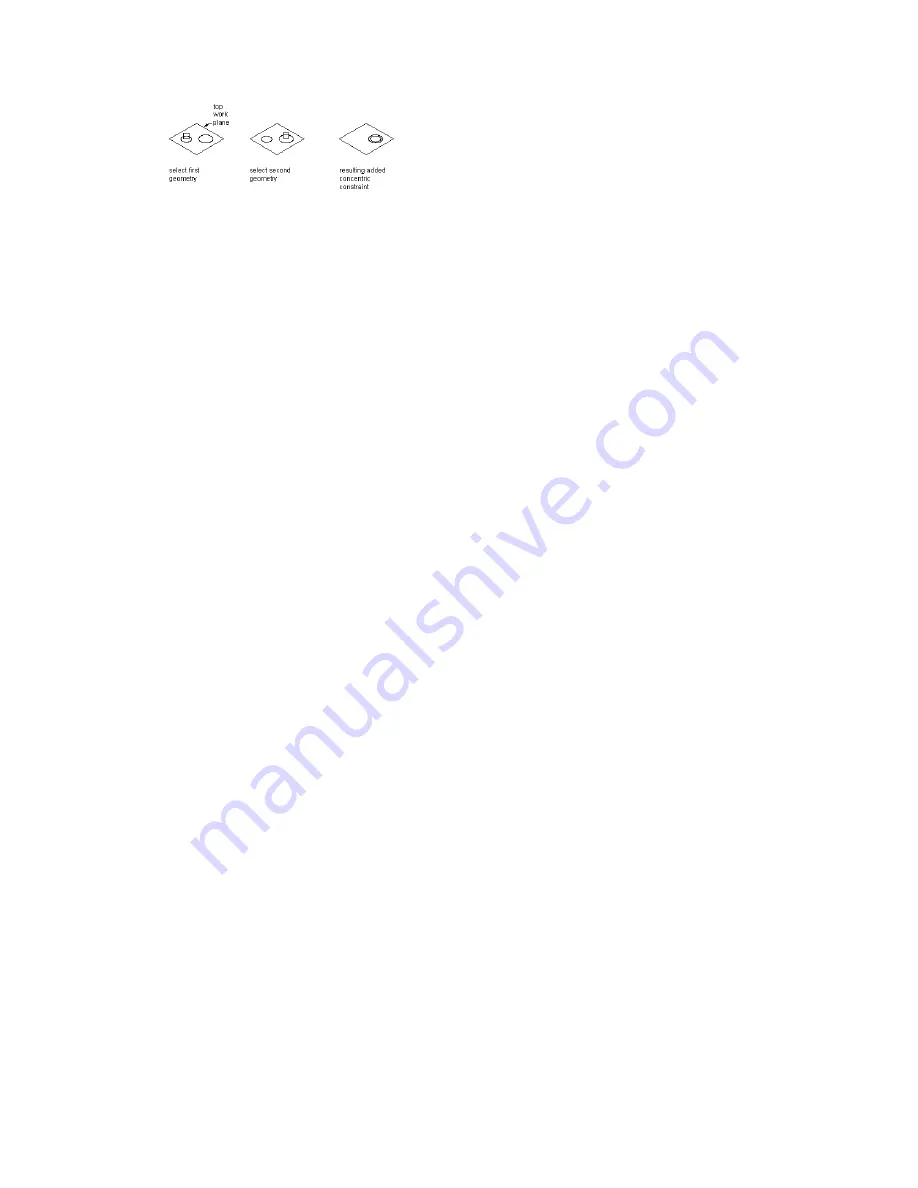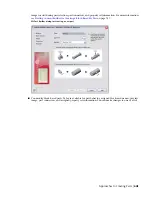
Applying a concentric constraint
Content Builder provides 10 geometric constraints. The following list describes these constraints and the
features with which they can be used.
Tangent
Can be defined between curved geometry (such as a circle or arc) and either another curved geometry
or a line. Makes 2 curves tangential to one another, even if they do not physically share a point. Tangency
is commonly used to constrain a line to an arc or circle.
Parallel
Can be defined between pairs of geometry with a direction, such as lines. Causes 2 or more lines
to be parallel to one another.
Perpendicular
Can be defined between pairs of geometry with a direction, such as lines. Causes selected
lines to lie at right angles to one another.
Concentric
Can be defined for any combination of circles and points. Fixes the centers of the geometry to
the same location. Common uses include circle to circle, where the center of both circles is the same; circle
to point, where the point lies at the center of the circle; and point to point, where the points are the same.
Coincident
Can be defined between a point and any geometry. Fixes 2 points (including center points)
together; essentially, the point lies on the geometry.
Equal Distance
Can be defined between 2 pairs of geometry. The distance between the first pair of geometries
is fixed to the distance between the second pair. Equal distance constraints do not control the actual distance.
Each pair of geometries must be one of the following: any combination of points and lines, 2 circles or arcs
concentrically constrained, or a point and circle or arc concentrically constrained.
Equal Radius
Can be defined between 2 circles or 2 arcs. Fixes the radius of both circles or arcs to be of the
same value. Equal radius constraints do not control the value of the radii.
Midpoint
Can be defined between a point and either 2 other points or 2 lines. The point is equal distance
from the other 2 geometries. Midpoint constraints do not control the distance. A common use is constraining
a point to the middle of a line.
Symmetric
Can be defined between 2 geometries of the same type and a line. The 2 geometries are
symmetrically arranged on opposite sides of the line. The symmetric constraint does not force constrained
geometry to maintain an exact mirror image.
Normal
Can be defined between a line or curve and a curve. (2 lines cannot be made normal; a perpendicular
constraint must be used instead.) The curves intersect and the directions of curve tangents are perpendicular
at the point of intersection. A common use is constraining a line to the normal of an ellipse.
Profiles
A profile is a 2-dimensional (2D) outline of a geometric shape. Using Content Builder, creating a profile is
as easy as drawing a closed shape. Profiles are similar to geometry in that they are a visual representation of
the 2D shapes that make up the model. Because profiles automatically associate constraints to the geometry,
you can use profiles as a source of information from which to create features. You create profiles on a work
plane and apply modifiers, such as extrusions, to them.
Content Builder provides 4 types of profiles to use for creating features in the model:
Circular
Creates a profile based on a circle defined by a center point and diameter to maintain its shape.
Building Parametric Fittings Using Content Builder | 659
Summary of Contents for 235B1-05A761-1301 - AutoCAD MEP 2010
Page 1: ...AutoCAD MEP 2010 User s Guide March 2009 ...
Page 22: ...4 ...
Page 86: ...68 ...
Page 146: ...128 ...
Page 180: ...162 ...
Page 242: ...Modifying the elevation of a duct 224 Chapter 6 Drawing HVAC Systems ...
Page 264: ...246 ...
Page 480: ...462 ...
Page 534: ...516 ...
Page 616: ...598 ...
Page 658: ...640 ...
Page 788: ...770 ...
Page 802: ...784 ...
Page 820: ...802 ...
Page 878: ...860 ...
















































